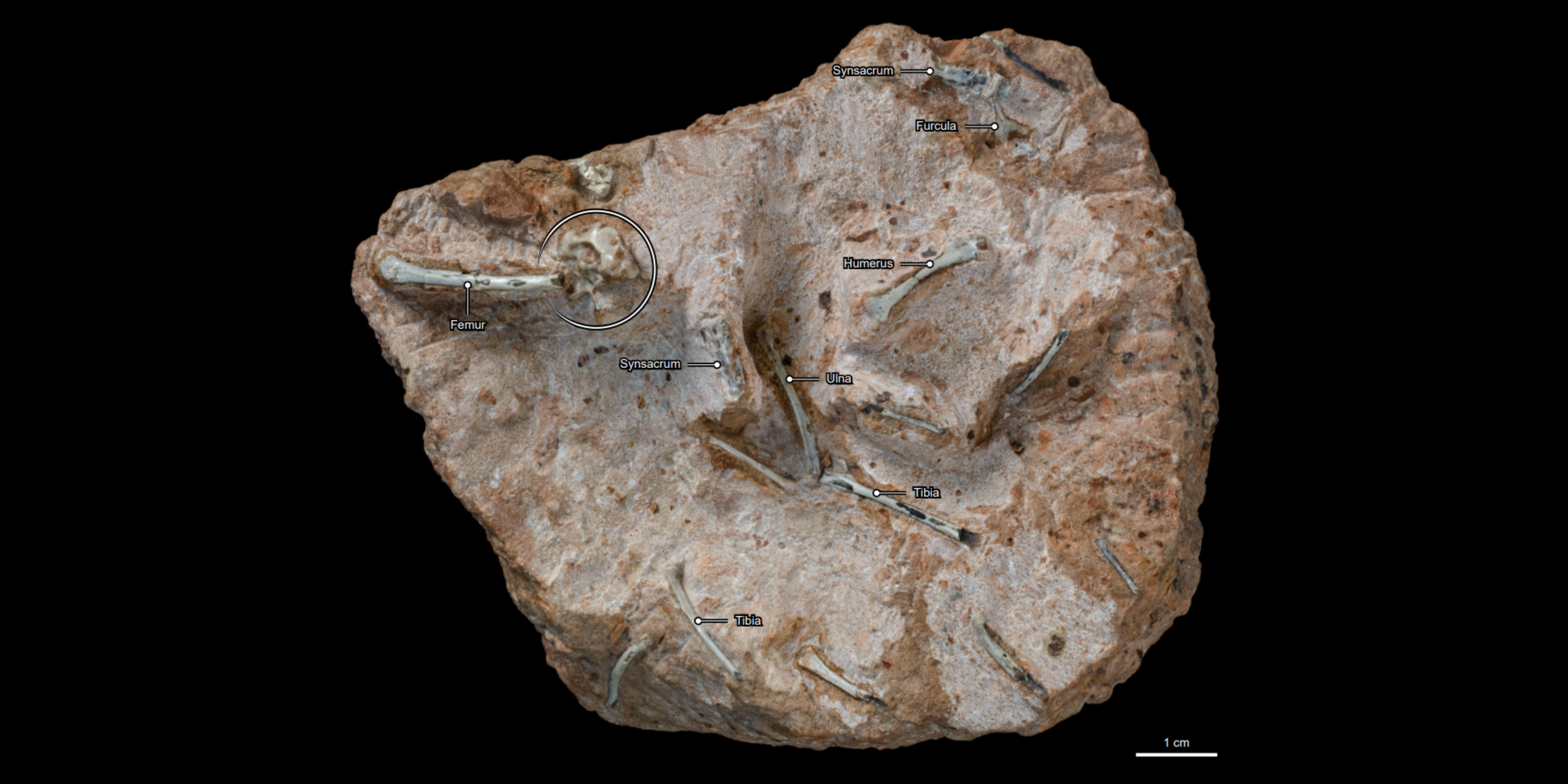
Submitted by Dr C.M. Martin-Jones on Wed, 19/10/2022 - 12:05
New research on an 80-million-year-old bird fossil suggests that early birds may have been highly intelligent like modern ones, changing our timeline of when they first got smart.
The study, which involved researchers from Cambridge’s Field Palaeobiology Research Group, mapped out impressions left inside the braincase of an exceptionally preserved fossil from a now-extinct lineage of birds. The results help us understand at what stage in their evolution birds got so smart.
Bird-brain insults aside, many modern birds like parrots and crows actually have similar intelligence to that of dolphins and apes. But the question of how and when they acquired this intelligence has been open to debate, because of a lack of fossil evidence.
“This study adds an important new datum to our understanding of cranial and sensory evolution in the early history of birds,” said Luis Chiappe, study author and palaeontologist at the Natural History Museum of Los Angeles County.
The first birds evolved from theropod dinosaurs, the group which includes T. rex, roughly 165 to 150 million years ago. Our earliest bird-like fossils include the feathered Archaeopteryx, which had a similar brain structure to non avian dinosaurs. “But from then until the origin of modern birds we barely have any information on bird brain evolution – there is an 80-million-year-long gap in the fossil record,” said co-author Guillermo Navalón, postdoc from Cambridge Earth Sciences.
Using CT-imaging, the researchers made a cast of the braincase of a fossil bird belonging to a group known as enantiornithines ('the opposite birds’). They then compared this mold with brains of modern birds and more distant dinosaur relatives.
“Opposite birds occupy an important position in the dinosaur family tree, midway between the famous Archaeopteryx and living birds,” explained Daniel Field, head of the Field Palaeobiology Research Group and study co-author. They are a diverse group of birds that first evolved in the Mesozoic era, beginning 130 million years ago, and eventually went on to populate the globe before going extinct 66 million years ago, in the mass extinction that claimed the non-avian dinosaurs.
The new detailed reconstruction of the brain of an opposite bird was only possible due to the unique preservation of the 80-million-year-old fossil, which was found in 2004 by co-author William Nava, a palaeontologist at the Marília Museum of Paleontology, near the city of Presidente Prudente in southeastern Brazil.
Usually, bird fossil remains become squashed as they are flattened into rocks, but this one was unusual because it was preserved in 3D – meaning the authors could make a cast showing the intricacies of long-extinct bird’s brain structure.
What the researchers found when they peered into the fossil skull surprised them: “These animals already had some of the advanced brain structures that we see in modern birds,” said Navalón.
The researchers show that the brain, rather than having a tubular shape like non-avian dinosaurs and crocodilians, was in fact curled over on itself and flexed into the shape of brains seen in some modern birds like hummingbirds or hawks. Scientists had theorized that ancient opposite birds had more in common with Archaeopteryx and that the traits we see in modern birds evolved later.
The curved brain shape in this fossil meant that the opposite bird could fit more grey matter into a small skull, likely giving it more brain power than its dinosaur forerunners.
The team were also interested in the bird’s inner ear structure, where the organ that helps maintain balance is found. “The large size and complexity of this organ and the brain meant the two were competing for space - this fact determined some aspects of its structure” said Navalón. This balance organ plays a role in flight, but its exact function and how it relates to the complexity of flight
The study results suggest that birds living 80-million-years-ago were probably more advanced than we had thought, said Navalón, “I like to think it’s possible that, if we went back to the era of the dinosaurs, we’d see all these early birds behaving just like modern birds in the rainforest – perhaps even performing complex mating displays.” But, Navalón explains, “This is just one dot in a gap of 80 million years, the only way to find out more about this story will be to find more fossil remains like this.”
Chiappe, L. M., Navalón, G., Martinelli, A. G., Nava, W., & Field, D. J. (2022). Fossil basicranium clarifies the origin of the avian central nervous system and inner ear. Proceedings of the Royal Society B, 289(1983), 20221398.
